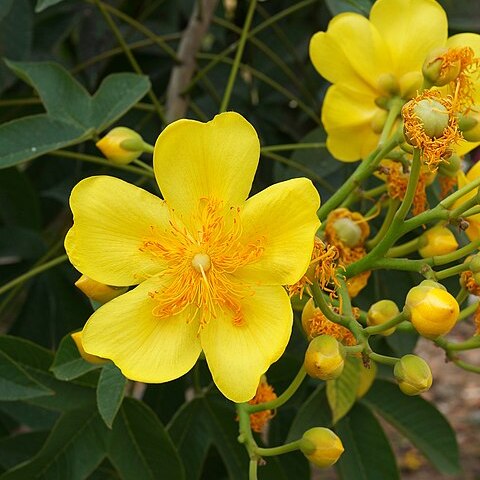A small deciduous tree. It grows about 6 m tall. The bark is fluted. It only has a few branches. The leaves are alternate and 7.5-20 cm across. They are gathered towards the ends of branches. They are divided like fingers on a hand with 3-7 lobes. These are softly hairy. The leaf stalk is 5-23 cm long. The flowers occur before the leaves. The flowers are large and golden yellow. They are 7.5-13 cm across. They occur in groups. There are 5 petals and these can be 5 cm long. They are broadly oval and notched. The fruit are pear shaped and leathery. They are 5-10 cm long and hang down. The seeds are kidney shaped. They are 0.8 cm long and covered with a silky floss. There are many seeds. These fruit capsules open when ripe and spread the seeds.

